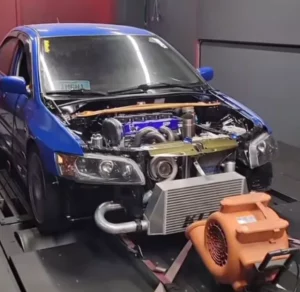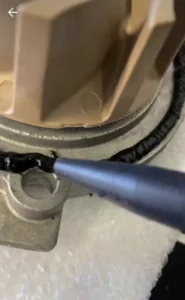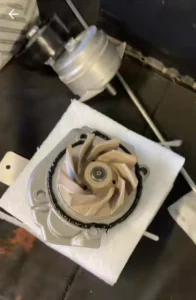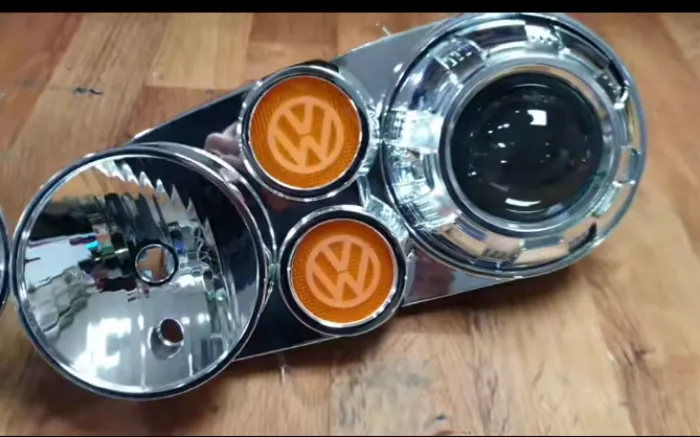Advice On Avoiding Silicone Damage
When it comes to avoiding silicone on turbochargers, there are a few important considerations to keep in mind. Silicone-based products, such as sealants or adhesives, can be detrimental to the functioning of a turbocharger due to their high temperature resistance and potential for clogging critical components. Here are some key tips to help you avoid silicone on turbochargers:

Select the Right Materials: When working on or around a turbocharger, it’s essential to choose materials that are compatible with high-temperature environments. Opt for heat-resistant gaskets, seals, and adhesives specifically designed for turbocharger applications. Look for products that explicitly state their compatibility with turbochargers.
Follow Manufacturer Guidelines: Always adhere to the manufacturer’s guidelines and recommendations for maintenance, repairs, and modifications on your specific turbocharger model. The manufacturer will provide the best guidance on what materials and products are safe to use without causing damage or compromising performance.
Avoid Silicone-Based Sealants
As mentioned earlier, silicone-based sealants can be problematic for turbochargers. Avoid using them in areas where they could come into contact with the turbocharger components. Instead, use specified gasket materials or sealants that are known to be safe for turbochargers, such as those made from high-temperature silicone or metal-reinforced gaskets.
sealants can be problematic for turbochargers. Avoid using them in areas where they could come into contact with the turbocharger components. Instead, use specified gasket materials or sealants that are known to be safe for turbochargers, such as those made from high-temperature silicone or metal-reinforced gaskets.
Check for Silicone Contamination: If you suspect that silicone-based products have been used near the turbocharger or its intake system, it’s important to inspect for potential contamination. Silicone can break down under high temperatures, leading to small particles that can be sucked into the turbocharger and cause damage. Check intake hoses, intercooler connections, and other relevant areas for signs of silicone residue or debris.
Regular Maintenance and Inspection: To ensure the longevity and optimal performance of your turbocharger, follow a regular maintenance schedule. This includes inspecting the intake system, hoses, and connections for any signs of wear, damage, or contamination. Addressing any issues promptly can help prevent more significant problems down the line.
Remember, if you have specific concerns or need detailed guidance on your turbocharger, it’s always recommended to consult with a qualified mechanic or the manufacturer of your turbocharger for the most accurate and reliable advice.
Best branded gasket turbochargers
There are several reputable brands known for manufacturing high-quality gaskets for turbochargers. Here are some of the best-branded gaskets commonly used in turbocharger applications:
Victor Reinz: Victor Reinz is a trusted brand that produces a wide range of gaskets, including those designed specifically for turbocharger applications. They offer gaskets made from durable materials that can withstand high temperatures and provide reliable sealing.
Fel-Pro: Fel-Pro is another well-known brand recognized for its quality gaskets. They offer various gasket options suitable for turbocharger installations, including multi-layer steel (MLS) gaskets known for their excellent sealing properties and durability.
Mahle:
Mahle is a renowned manufacturer of engine components, including gaskets for turbochargers. Their gaskets are designed to meet the demands of high-performance applications and provide reliable sealing under extreme conditions.
Elring:
Elring is a German brand that specializes in gaskets and sealing solutions for automotive applications. They offer a range of turbocharger gaskets known for their high-quality construction and compatibility with turbocharger systems.
OEM (Original Equipment Manufacturer): In some cases, it’s best to stick with the original gaskets provided by the turbocharger manufacturer or the vehicle’s original equipment manufacturer. These gaskets are specifically designed for the turbocharger model and ensure a proper fit and sealing performance.
When choosing gaskets for your turbocharger, it’s important to consider factors such as compatibility with your specific turbocharger model, the material’s heat resistance, and the reputation of the brand for reliability and quality. Additionally, consulting with a knowledgeable mechanic or turbocharger specialist can provide valuable insights and recommendations based on your specific needs.
Where to apply silicone on turbocharges
When it comes to turbochargers, silicone is generally not recommended for application directly on the turbocharger or its critical components. Silicone-based products, such as sealants or adhesives, can have adverse effects on the functioning of the turbocharger due to their high-temperature resistance and potential for clogging or damaging the internal components.
is generally not recommended for application directly on the turbocharger or its critical components. Silicone-based products, such as sealants or adhesives, can have adverse effects on the functioning of the turbocharger due to their high-temperature resistance and potential for clogging or damaging the internal components.
However, there may be certain instances where silicone-based products can be used in specific areas surrounding the turbocharger. Here are a few examples:
Intake System Connections: Silicone-based hoses or couplers can be used in the intake system of the turbocharger. These hoses are known for their flexibility and heat resistance, allowing them to handle the high-temperature air flow without degradation.
Intercooler Connections: If your turbocharged vehicle is equipped with an intercooler, silicone-based couplers or connectors can be used to join the intercooler pipes. These silicone connectors provide a secure and heat-resistant connection between the intercooler and other components.
Vacuum Lines: Silicone vacuum lines can be used for various vacuum-operated components in the engine bay, such as wastegate actuators or boost control valves. Silicone vacuum lines are known for their durability and resistance to high temperatures.
It’s important to note that while silicone-based products can be used in the areas mentioned above, it’s crucial to ensure that they do not come into direct contact with the turbocharger itself or its internal components. Silicone-based sealants or adhesives should not be used directly on the turbocharger.
Always consult the manufacturer’s recommendations or seek advice from a qualified mechanic or turbocharger specialist for specific guidance on your turbocharger model and the appropriate materials to use in different areas of the turbocharger system.
What to do after your turbocharges get silicone debris or dust
If your turbocharger has encountered silicone debris or dust, it is important to take appropriate actions to prevent further damage and restore its optimal functioning. Here are the steps you should follow:
Inspection: Inspect the turbocharger and the surrounding components for signs of silicone debris or dust. This can include checking the intake hoses, intercooler connections, and any other areas where silicone-based products might have been used.
Clean the Intake System: If you find silicone debris or dust in the intake system, it is essential to clean it thoroughly. Start by disconnecting the intake components, such as hoses and intercooler pipes, and inspect them for any visible debris. Clean them using an appropriate solvent or degreaser to remove the silicone particles. Compressed air can also be used to blow out any remaining debris from the components.
Check the Turbocharger: Carefully examine the turbocharger itself for any signs of silicone contamination. Inspect the compressor wheel, turbine housing, and other internal components. If you observe silicone debris or dust inside the turbocharger, it is advisable to have it professionally inspected and cleaned by a qualified turbocharger technician. They have the necessary expertise and equipment to disassemble and clean the turbocharger without causing any further damage.
Replace Damaged Components: Depending on the severity of the contamination, certain components may need to be replaced. For example, if the turbine wheel or compressor wheel is damaged or heavily coated with silicone debris, it may require replacement to restore proper turbocharger performance.
Prevent Future Contamination: To prevent future silicone contamination, it is crucial to avoid using silicone-based products near the turbocharger and its intake system. When performing maintenance or repairs, opt for materials and sealants specifically designed for turbocharger applications and recommended by the manufacturer. Regularly inspect the intake system and related components to identify any potential sources of silicone contamination and address them promptly.
Remember, if you are unsure about the extent of the contamination or how to properly clean or repair the turbocharger, it is recommended to consult with a qualified turbocharger specialist or mechanic. They can provide expert guidance based on your specific situation and ensure that the necessary steps are taken to restore the turbocharger’s performance and longevity





